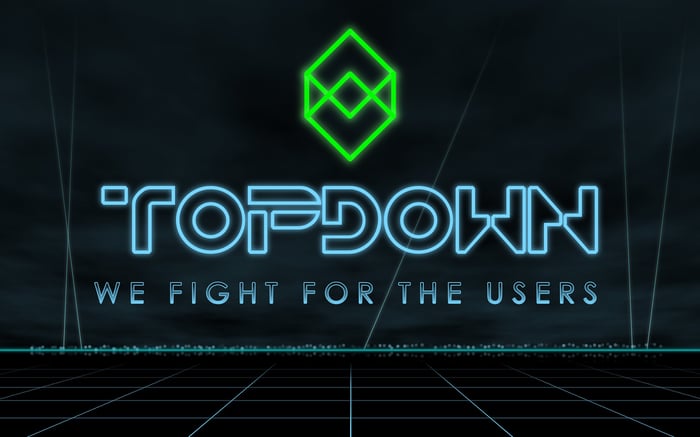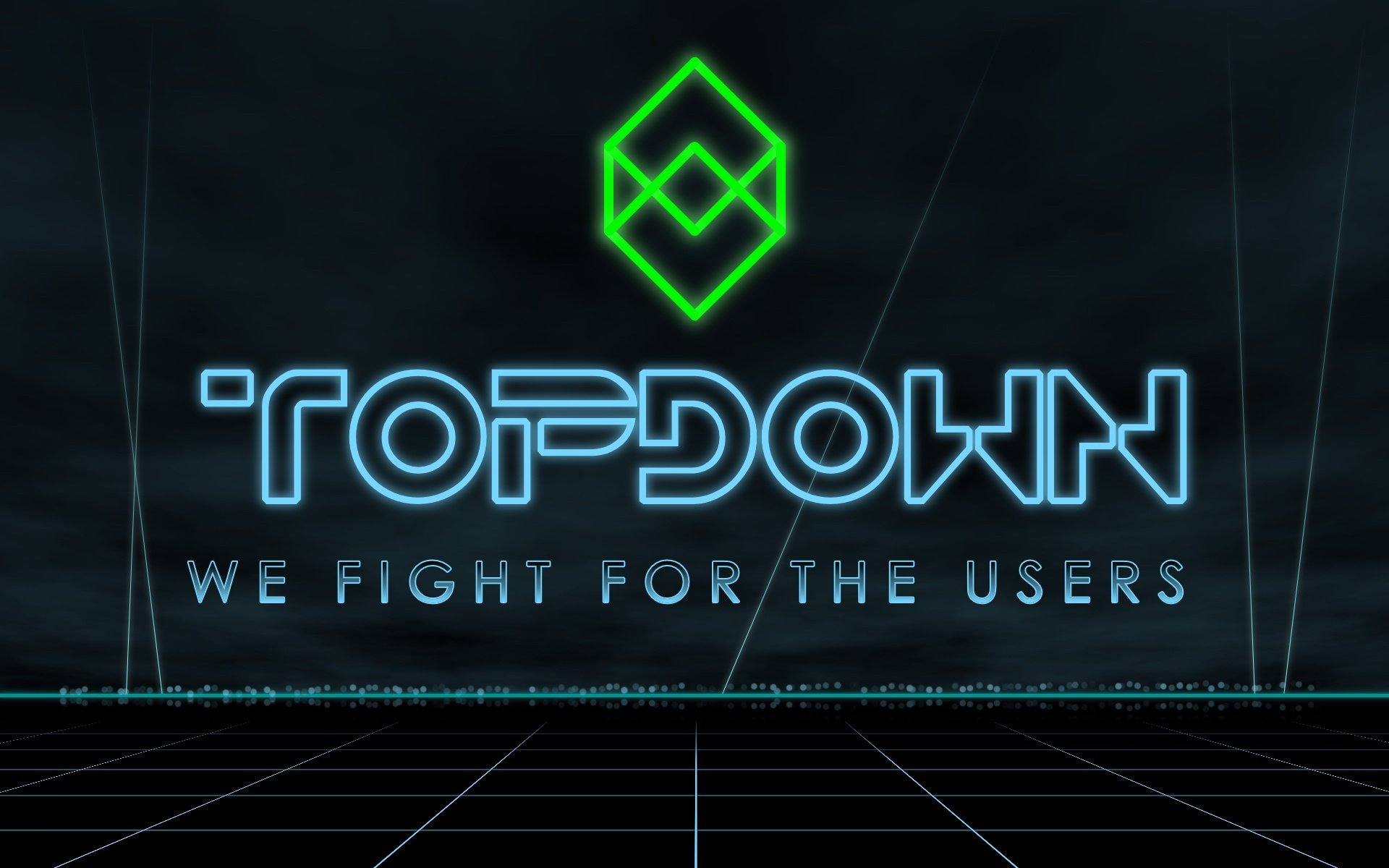We Fight for the Business Users!
In customer experience management, there’s little dispute that the customer comes first. Everything you do should serve the customer’s needs and improve his or her experience with your brand, products and services in some way. Why? Because satisfied customers are loyal customers who buy again and spread positive word of mouth about your brand, which is the most valuable kind of marketing in our modern connected marketplace.
Those of us who make tools to connect you with your customers must keep ourselves focused on this philosophy as well – but in our case, the customer is you, the enterprise software user. At Topdown, our development strategy is built around the idea of putting the business user first. Here’s what we mean by that.

Original Tron-inspired artwork copyright 2016 by JD Hancock and used by permission of the artist.
We’re developing our new customer communications management (CCM) solution using a unique process. We have combined the principles of design thinking, lean and agile development, and product co-creation and open innovation (sometimes referred to as crowdsourcing) in order to inject the voice of the customer into our product development process. We want to make sure that the product we’re developing includes only the features and functions that real-world customers (i.e., business users) actually want/need.
We believe this development methodology to be unique – as far as we know we are the only software vendor using it…at least in the CCM space.
A Little History of Software Development
For decades, enterprise software development was done in monolithic fashion. Large teams of engineers met to establish product requirements, perform analysis resulting in models and schema, and design the software architecture before coding, testing, debugging and deploying the results. This is called the waterfall model, and it produced giant software packages that were years in the making, with a large chunk of time spent on planning alone. As conditions continued to rapidly change in hardware capabilities, virtualization and enterprise IT architecture, the software development process needed to get faster and more flexible to keep up.
In February of 2001, a group of seventeen software development professionals got together to create an alternative to “documentation-driven, heavyweight software development processes” like the waterfall method. The result was the Manifesto for Agile Software Development, which turned out to be a game-changer. And just a couple of years later, lean software development came into vogue. It combines the agile principles with the Japanese concepts of kanban (with a scrum board instead of parts bins) and kaizen, or continuous improvement.
I would summarize lean and agile software development as “empower[ing] a development team to think, plan, develop, ask, and iterate as quickly and efficiently as they can.” Developers move in fast “sprints,” the goal of which is to spend just one to three weeks to come up with a discrete piece of the larger vision – a piece that is complete and functional if not yet elegant or refined – instead of trying to proverbially swallow the elephant whole and produce the entire monolithic software package at once.
How Lean and Agile Development Benefits Business Users
By working in sprints and alternating design sprints with development sprints, we’re ensuring that we don’t lose sight of the users’ needs. By forcing function to follow form, we’re ensuring that users’ needs come first.
We’re conducting a beta program of sorts with real business users in conjunction with our design and development sprints to ensure that we remain responsive to usability drivers in real time. As a result, we won’t be able to get too far down a wrong path before this self-correcting process brings us back to where you, our users, need us to be. Already, we’re building in UX features that our user-centered design process indicates CCM users want and need, such as a more streamlined visual interface, minimal clicking and movement among screens, and smooth interoperability of components.
The end result will be simplicity of form and function. Users will (hopefully) be blissfully unaware of how the sausage is being made and just enjoy an application with a consistent user interface, created to make life easier and communications better. That’s the definition of a great customer experience, isn’t it?
Want to follow along with our development process as we go? Subscribe to the blog now for updates.







